 Horticulturally speaking, my current preoccupation is an orchid, or to be precise a phalaenopsis. For the profanus amongst us, the moth orchid is apparently the most popular orchid grown as a house-plant, at least in terms of the numbers sold. Up until now, I've steered clear of such exotic creatures fearing the special care they need. However, I've now acquired a specimen by way of a thank-you gift from a friend saying it with flowers.
Horticulturally speaking, my current preoccupation is an orchid, or to be precise a phalaenopsis. For the profanus amongst us, the moth orchid is apparently the most popular orchid grown as a house-plant, at least in terms of the numbers sold. Up until now, I've steered clear of such exotic creatures fearing the special care they need. However, I've now acquired a specimen by way of a thank-you gift from a friend saying it with flowers.Needless to say, the instructions (in 4 languages), which accompanied the plant, were rather rudimentary : light - bright but no direct sunlight ; temperature - between 18 and 22°C ; water occasionally but don't leave any water in the pot ; feed occasionally and cut the flower stem back to the 3rd or 4th eye after flowering. Being so succinct, the information suggested more questions than it answered. Fortunately, I live near a very good garden centre that presently has an indoor display of orchids growing in the intersections of tree branches set up as supports. The display, like a picture, spoke a thousand words. I now understand, with further reading, that orchids of this kind are epiphytic, they grow on the surface of other plants but are not parasitic. In their natural habitat, aerial orchids typically live on the branches of trees in communities with other epiphytic plants. They are true survivors as their arboreal colonisation is the result of a lack of light on the forest floor.
Certainly, epiphytic orchids are well adapted to their lofty accommodation with aerial roots that draw in moisture and nutrients more from the surrounding air than the scant vegetable matter in which they nestle. This explains the very dry and loose compost and the clear plastic pots in which commercially-grown orchids are usually sold. The roots need light.
So, forearmed with this information I have opted to hang my orchid in a net from the ceiling in the bathroom where I hope it will enjoy the temperate and humid atmosphere, the dappled light and the company of the other plants that seem to be living quite happily there.
The orchid flowers are indeed exquisite. I quite understand Tuvok's predilection for orchidaceae. Following the footsteps of his forebear Spock, the Vulcan officer serving on board the star ship Voyager has an understandable propensity for perfection. Tuvok's collection of orchids suggests that Voyager is equipped with a lighting system that truly imitates daylight - no doubt essential for the well-being of its crew (and its on-board garden) wandering at length through space. Apologies for the digression but I can't help it, aliens with pointed ears and irritating logic always come to mind when I see an orchid. Maybe if ever we make first contact an offering of orchids should be our welcoming gesture, à la Hawaiian who are said to say it with flowers.
In the meantime, I'm enjoying the position of my orchid and may indeed fix a few more hooks into the ceiling so that I can expand this epiphytic community. With the zebra finches that I've painted on the bathroom tiles peeking through its foliage, my phalaenopsis at least 'looks' well suited to its new location. That being said, after this initial research I have some concerns about my orchidaceae : when the plant reached me it leaves were showing some discolouring, a result perhaps of inappropriate conditions in the shop or in transit ? Still, most things want to live and hopefully, with a bit of gentle nurturing, it will pull through the ordeal of all the man-handling its endured to date.

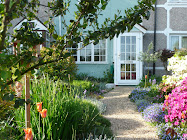

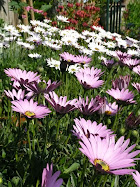
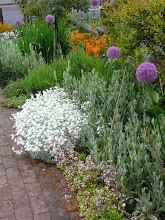



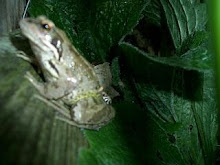
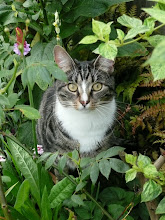




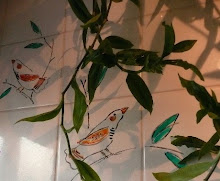
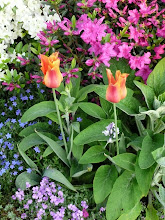




No comments:
Post a Comment